By Carl R. Raswan
**originally published in Western Horseman Nov/Dec 1945 issue
Lady Wentworth, daughter of Lady Anne Blunt (to whom we Arabian horse breeders of America owe a lasting gratitude), has written two remarkable books. “Thoroughbred Racing Stock” (on the origin of the Thoroughbred through Arabian blood) and “The Authentic Arabian Horse” just published in London).
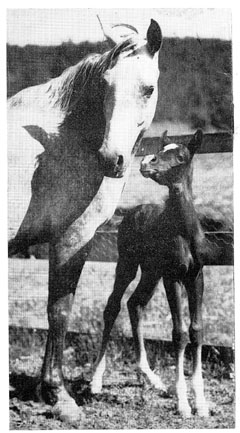
These two volumes are exceptional for their wealth of information gathered from innumerable sources – ancient and modern publications and manuscripts, paintings, sculptures, coins, rock drawings, skulls, etc. The two books should be owned by every agricultural college library and by all serious Thoroughbred and Arabian horse breeders.
We Arabian horse breeders in America find these two books contain a challenge. We cannot accept it without answering some contentions and we must (for the sake of historical records and any future references in which our Arabian horse breeders in America are interested) correct some statements.
Lady Wentworth makes it appear as if only those of our Arabian horses in America which can be traced to her Crabbet Park stud farm in England are of any breeding value. Since we have in the United States an established and recognized Arabian stud book (of growing volume as the years go by), we cannot allow Lady Wentworth’s statements to go by without challenging them, and we must present the actual facts about those historical Arabians in the United States whose good qualities and true Desert (Bedouin) descent she questions.
Our American horses of undoubted Arabian blood, imported by Homer Davenport, receive the worst “let-down” in the Wentworth books.
Granted that Homer Davenport only traveled in Syria and in the North Arabian desert and never in Nejd (Inner Arabia), at least the lady must admit that Davenport went to the same Bedouin tribes from which her mother (Lady Anne Blunt) and her father (Sir Wilfred Blunt) bought most of the foundation stock of Crabbet Park (Lady Wentworth’s present stud farm.) Lady Wentworth never went to Arabia or to the Inner Arabian Bedouin tribes herself. All the drawings and reproductions of her “desert” paintings in both of her books are purely Egyptian, Syrian and Algerian in background (the countries where Lady Wentworth lived at times and revisited outside of England.) Her manner of discarding the Davenport Arabian horses and the historical accomplishments of Davenport and many other American horse breeders who had a great share in the importation of Arabian horses (directly or indirectly) from the Desert, is wholly unfair to these great breeders.
Homer Davenport imported not only from Desert Arabia, but from Lady Anne Blunt herself (for example, Markisa, Berid, Jahil) and from Lady Anne Blunt’s friends, who had bred from her stock.
According to Arabian studbook registrations in America, records show that Homer Davenport’s Desert Arabians traced as follows: sixteen of the Anazah (either Fidan or Saba) tribes, and five of the Shammar tribes. Only Antar was born in Aleppo from Bedouin horses, and Abbeian is simply marked as “Desertbred.” These records could not condemn a single one of the Davenport Arabians in our eyes. They were as good (or better) than any of the original “fountain-heads” of the Blunts, who bought many of their Arabians in or near Dey (Ez-zor) on the Euphrates river, Aleppo, Damascus, Baghdad, and other Near Eastern cities, villages and oases. If we compare purity of pedigrees (signed and attested by chiefs of Desert Arabia), we find that the Davenport documents are just as good (and in many instances even more authentic) than the Blunts’. In fact, many of the horses imported by Davenport look much better (more of the true Arabian type) than some of the imported Blunt Arabians.
I am not saying that the Blunt Arabians were not so good as the Davenport Arabians, but I will not let Lady Wentworth’s challenge go by without putting on record that some of the Blunt “Desert” Arabians were an inferior lot when compared to the fine specimens of distinguished Arabian type which Homer Davenport, the American, brought to the United States.
Lady Wentworth questions Davenport’s hunt for Bedouin-bred Arabian horses. She denies that Davenport contacted true Bedouins of Arabia, as he spent only such a short time in the Near East. To this I can only answer: Homer Davenport had the assistance of the Turkish government through the good efforts of our American president, Theodore Roosevelt (well beloved in all Near Eastern countries). Homer Davenport not only saved time (through these valuable political connections) but also “space” in Arabia. Turkish officials in America advised him not to visit Aleppo and the North Arabian Desert before summer, as by that time the migrating tribes of Inner Arabia would be farthest north and west in Syria in their search for pastures and rainpools. In fact, some of these tribes had special permission from Turkish governors in Syria and Mesopotamia to bring their horses into the neighborhood of certain villages (but still in the desert) with guarantee of safe conduct under a flag of truce. This was at a time when blood feuds or political reprisals (for non-payment of taxes, etc.) might otherwise have prevented some Bedouin chiefs and their horsemen to venture so close to settled territory under Turkish sovereignty (and where the Bedouins would come under the Turkish law instead of under their own “unwritten code” of the desert.)
Horse breeders will ask: How could certain Blunt (Crabbet Park) Arabians, which belonged to (what I call) the “poor lot” of the early Blunt Arabians, win championships in horse shows in England? The answer is: There was hardly any competition to speak of (as far as Arabian horses were concerned) at that time — 1879 and the following decades — in England. Even in our time (1926 – 1938) Lady Wentworth competed exclusively against her own Arabians (Royal Richmond Horse show) — or against Arabs raised in England exclusively or mostly from her own breeding.
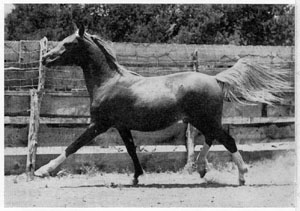
Photo of “Sartez” at two years old, a perfect 50-50 blend of Davenport and Blunt bloodlines.
If Lady Wentworth’s Crabbet Park stud farm had not been reduced so drastically lately (she used to have 90 to 120 head of Arabians and she has only six broodmares now), we Americans could challenge her with our own Arabians, and prove to her that we in America have bred just as fine a type of Arabians from Davenport’s importations as from her Crabbet Park stock — or from mixing bloodlines of the Davenport and Blunt (Crabbet Park) Arabians. For an example I include a photo of the two-year-old colt “Sartez” (No. 2500), who is an exact 50-50 mixture of Davenport and Crabbet Park (Blunt) Arabian bloodlines. This “little” horse, now 14 hands and three inches, resembles Crabbet Park’s “Rasim” in many ways and he appears to have a better head even than the “immortal” Rasim. I wonder what “wrong” the Davenport blood has done to Sartez?
I hope that many of our readers who own Davenport Arabs will send in photos so that we can show Lady Wentworth what outstanding individuals of Arabian type these Davenport horses have produced. Lady Wentworth criticizes pioneer American breeders and their imported Arabian horses. These men are dead and can’t answer to the English lady, but their horses live and we present-day Americans breed from Davenport and other horses. Hence we are maligned, too, if we don’t answer the unreasonable charges against the purity and origin of our Arabian horses in America. We set a high value on them! Not only for sentimental reasons, but also for much more serious motives; we want to continue to breed fine Arabians, co-operate with our friends, the Arabian breeders in England and in other foreign countries, and use the best colts to improve Arabians as well as ordinary ranch and other saddle horses in all parts of the world.
Lady Wentworth’s criticizing remarks extend not only to Homer Davenport and his Arabians, but also to Randolph Huntington and other Americans and their Arabians. Homer Davenport, Spencer Borden, W.R.Brown, and Albert W. Harris have written smaller books than Lady Wentworth’s, but in many respects much more original. Without the books of these American authors the “pattern” of the history and breeding of Arabian horses would lack its finest designs. She passes Homer Davenport’s book with the remark that it was “another advertising stunt,” and a “highly imaginative book.” To Arabian horse breeders all over the world, the Homer Davenport book ranks with Lady Anne Blunt’s two books, and whatever material of Lady Anne Blunt’s is incorporated in her daughter’s (Lady Wentworth’s) two volumes.
It is with deep and sincere feeling that I write these pages concerning Lady Wentworth’s generally fine historical books, but we Americans know that our own 2400 living Arabian horses in the United States today, trace at least by 90 percent to Homer Davenport’s, Spencer Borden’s, Randolph Huntington’s, J.A.P. Ramsdell’s, W.R. Brown’s, Albert W. Harris’, Joseph E. Draper’s, J.M. Dickinson’s and Henry B. Babson’s importations from Arabia, Egypt, Poland, France, England, Spain, South America, etc. These imported Arabians were as good as any of the Blunts’ and Lady Wentworth’s. And some of the American breeders also imported from the Blunts and Lady Wentworth, besides buying from other Arabian breeders in England, Egypt, etc.
Some of the Blunt “Desert” Arabs actually came from settled districts, villages in Syria, and from semi-peasants on the Euphrates, and from Turkish government officials, a Christian in Baghdad, a Greek in Syria (Damascus), a Turkoman chief, an Ulema in Aleppo, a townsman of Syria (Hama), and from dealers in India.
Davenport’s record looks clean, indeed, compared to this conglomeration of village and towns-people (and not Bedouins!) from which the Blunts bought at times. After all, these horses were of Bedouin descent — most of them. All I ask is that Lady Wentworth not make out her conglomerated Arabians to be superior to the Davenport and other Arabians in America. We know that most of the Blunt Arabians are “tops.”
The blood of the “conglomerated” Arabians of the Blunts has been “swallowed” up during the last forty to sixty years in Crabbet Park (Lady Wentworth’s stud farm in England) in the overwhelming flood of exquisite blood which the Blunts added from Ali Pasha Sherif of Egypt, and of the Anazeh and Shammar tribes — the very same tribes (and in certain instances the same families of certain sub-tribes) from whom Homer Davenport bought twenty years later! (For example, the Ibn Meheyd of the Fidan-Anazeh, and many others).
“Poor” Blunt Arabs of the late seventies and eighties of the last century are in our time so far left behind (six or more horse generations) that hardly a characteristic trace of their faults or blemishes remains in their present-day offspring. Lady Wentworth was anxious to re-infuse new blood (of the most authentic and famous bloodlines of the classic strains) into her Crabbet Park stud. Most notable and best known of all was the (now deceased) Polish Arabian “Skowronek,” who became her leading sire and produced the outstanding Arabians to be found in her stud to this day.
Though Lady Wentworth denies the pure strain (or related-in-the-strain) breeding, I discovered the following passages in her own books:
“In the Sebaa and Fedaan groups of Anazeh, only such families as Ibn Sbeyni, Ibn El-Derri, Ibn Hemsi, Ibn Sbeyel, and a few others are credited by Nejd opinion with having preserved their strains of Seglawi-Jedran, Dahman Om Amr, Managhi Hedruj, etc., unmixed.” (“Thoroughbred Racing Stock.” page 116).
These Sebaa and Fedaan are the very same tribes from which Homer Davenport bought most of his own horses, and the animals Davenport acquired were of the strains mentioned above by Lady Wentworth. The following Davenport Arabians were unmixed (no Muniqi and no Muniqi-related blood): Houran, Muson, Hamrah, Wadduda, Gomusa, Azra, Deyr, Mowarda, Euphrates, Antar, Reshan, Abeyah, Urfah, Hadba, Jedah, Haffia and Moharra. All these original Davenport Arabians were of the classic strains (rounded outlines.) Two horses of Davenport’s importation were pure Muniqi on dam’s and sire’s side: “Kusof” (later a U.S.Remount stallion) and the mare “Farha.”
What further proof do we need to show that still in Davenport’s time (1906), Desert tribes were breeding pure in the strain (or related in the strains)?
Lady Wentworth is ahead of us in only one respect: Her Arabians are on the average taller than our Arabians of Davenport descent, but she admits herself (in her books) that Arabians and their offspring gain about half an inch every twenty years through better and regular feed and care. The Blunt Arabians bought in Syria, Iraq, Arabia and India, have been purchased at least 26 years earlier than those acquired by Davenport in the Desert. Offspring of Muhammad Ali Pasha’s, Abbas Pasha’s and Ali Pasha Sherif’s horses are eighty to 130 years removed from Desert Arabia, and their produce have gained anywhere from three to six inches (in Egypt, Europe and America). The best Blunt-blood traces to these Muhammad Ali, Abbas Pasha, and Ali Pasha Sherif horses, and the Davenport offspring from those individuals (of the classic strains) mentioned above have mixed superbly well with the Arabians of the Egyptian Pashas.
The following quotations from Lady Wentworth’s book, “Thoroughbred Racing Stock” (page 126), show an admission that pure-strain breeding is the best:
“It is only in rare cases that mares can be mated for many generations to horses of their own strain, as in the case of the Krushiehs of the Muteyr.”
What does Lady Wentworth say of the “Krushiehs” in other parts of her book, that prove that pure-strain breeding produces the best Arabians? She says:
“A mare was wished (by Abbas Pasha) of that Kehilan El-Krush strain which is the special pride of the Dushan clan of the Muteyr — but the reply was unfavorable; nothing was to be had of that strain at any price” (from Lady Wentworth’s “The Authentic Arabian Horse,” page 143. On the head of this page are printed significantly these words: “The Priceless Krush Mares.”
Further down on the same page we read:
“Yet the failure of Abbas Pasha’s emissary to obtain a Krushieh, notwithstanding his readiness to pay almost any price, is still a matter of pride to the members of the Muteyr tribe.”
And still further down on the same page we find the following words:
“Latterly Ibn Saoud reconquered the Ibn Rashids, and the Crabbet stud secured a fine white Krushieh mare.”
Now, let us turn to the Arabian studbook of England, and we find that this white Krushieh of Lady Wentworth’s was pure-in-the-strain-bred! Dam and sire belonged to the Kuhaylan strain! The dam was a Kuhaylat El-Krush (of Ed-Dauish, chieftain of the Mutayr tribe), and the sire a Kuhaylan Es-Suayti (of the Harb tribe). What I want to emphasize (on the strength of these quotations from Lady Wentworth’s two books) is that the outstanding Arabian horses mentioned in these two volumes of hers are the Krushiehs of the Muteyr tribe — and by her own words these Krushieh mares were bred to stallions of their own strain (Kuhaylan), producing (as she writes) a strain of horses that are “the special pride” of the tribe, and that they were “not for sale at any price.” Even Abbas Pasha could not acquire them.
Should we not (after this testimony by Lady Wentworth) try to breed pure-in-the-strain? And, if we cannot match certain parent horses in their own strain, should we not (at least), breed within related strains? (Kuhaylan with Saqlawi, for example).
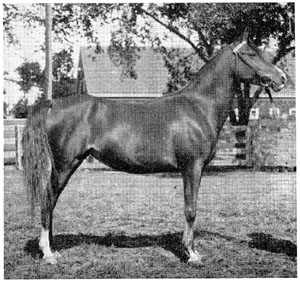
Davenport’s pedigrees from Desert Arabia, written in Arabic and signed by the chiefs, testify to the same fact: The Bedouins, even as late as in Homer Davenport’s time (1906) were still breeding either pure-in-the-strain, or related-in-the-strain.
Homer Davenport brought from Arabia the following absolutely pure-in-the-strain Arabians: Reshan, Abeyah, Urfah, and Jedah. They were bred within the same strain on dam’s and sire’s side (just like the “White Krushieh” mentioned above!) In fact, Davenport’s lovely mare Werdi was a Krushieh, and one of her grandsons is one of the best Arabian stallions in California today (on Jimmy Draper’s ranch near Oakland). To the four pure-in-the-strain classic type Davenport Arabians from the desert we have to add his two pure-in-the-strain Muniqiyat mentioned before, Kusof and Farha. It pays to study and analyze our Arabian studbooks and draw knowledge and the truth from them!
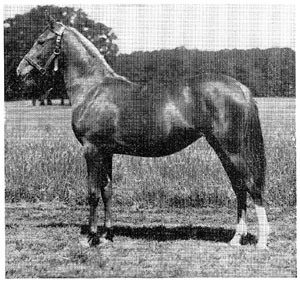
Would Lady Wentworth still discard our Davenport Arabians as “unregistered street sweepings? (See her book: “The Authentic Arabian Horse.” page 215).
The Jockey Club and Weatherby (very wisely, I would say, as they were registering Thoroughbreds and should never have accepted early Blunt Arabians into their records) refused to accept Davenport Arabians in their studbooks, though the “conglomerated” Blunt Arabians from the streets of Syrian villages and towns were “swept” into the studbooks of the Jockey Club and Weatherby.
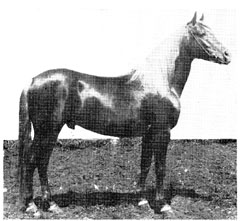
Let us turn to Lady Wentworth’s own Crabbet Park Arabians again and check on the early Blunt horses of Bedouin (Desert) descent. Pure-in-the-strain were the following eighteen imported Arabians: Burning Bush, Purple Stock, Darley, Haidee, Zuleika, Kars, Hagar, Dajania, Jerboa, Damask Rose, Ashgar, Saoud, Pharoah’s Dam, Abeyan (1906), Krush (a grey, imported 1911), and the famous “white Krushieh” (imported 1927), Saadun (1911) and Saade (1912). The following twelve were Ali Pasha Sherif Arabians in Blunt’s possession. Each was recognized as an outstanding animal, each one’s dam and sire was of the same strain: Aziza (I), Azz, Bint Roda, Ghalaya, Gharran, Horra, Ibn Mesaoud, Ibn Nura, Jemla, Sahab, Waziri (the best stallion the Blunts ever owned) and Zobeyni. In Zobeyni’s pedigree, Lady Anne Blunt wrote: “The Anazeh tribes had a high reputation for preserving the breed of horses pure, but in the last thirty years this has gone down, although there are still families such as Ibn Sbeyni’s (breeders of this outstanding stallion Zobeyni) and Ibn Ed-Derri’s and a few others who possess authentic strains.”
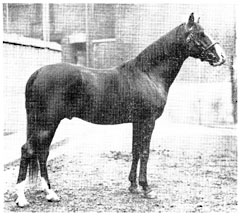
The great-grandmother of the Blunt-Arabian, “Nuri Sherif”(above), was Blunt’s mare, “Wild Thyme,” whose pedigree says: “Said to be a Kehileh El-Fidawi, bred by the Baggara tribe.”
The “authentic” (Arabic “Asil”) horses are none other than those who can trace both of their parents to the same strain (or at least to the related strains).
Major Upton brought from Desert Arabia (1875) four Arabian horses: Joktan, Ishmael, Kesia, and Meroe, and all four were pure-in-the-strain horses.
All Arabians in America and England are of mixed strains, but our best ones are those which have no Muniqi at all, or are at least five generations removed from Muniqi (and may thus be considered as good as pure-in-the-(classic)-strains.
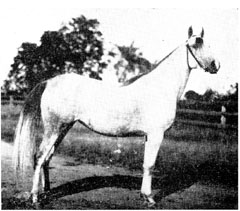
The second best are at least three generations removed from Muniqi blood. Even the less distinguished mares can be used to produce improved offspring by mating them with stallions which are at least one more generation removed from Muniqi blood than the mares. Thus it makes no difference whether we breed Davenport or Blunt (or mixed Davenports and Blunts). If we have Muniqi horses (according to the old system of strain-registration through the dam’s side) we shall find in most instances (by checking the strain-names of their ancestors) that these so-called Muniqiyat are actually only ⅛ or 1/16 Muniqi.

Muniqiyah mares proven to be overwhelmingly of Kuhalan (and Kuhaylan-related strains like the Hadban and Hamdani) should be bred to sires which are also overwhelmingly Kuhaylan.
Muniqiyah mares proven to be overwhelmingly of Saqlawi (and Saqlawi-related strains like the Abayyan and Dahman) should be bred to sires which also are overwhelming Saqlawi.
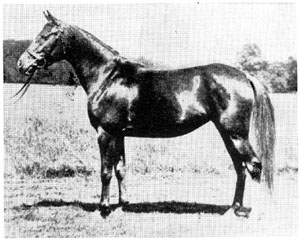
Since the only differences (in characteristics) among the classic strains are a question of strength (more muscle and width) and beauty (elegance, finer bone) we do not have to worry if we do mix Kuhaylan and Saqlawiyat. We only have to guard against the re-infusion of the angular (and coarser) Muniqiyat, which have smaller eyes (set high, instead of low), longer back, sloping hindquarters, and narrow windpipe, but excellent legs and shoulders).
Since the Jockey Club and Weatherby’s Thoroughbred registrations do not accept new Arabian entries, foreign buyers of Arabian horses will also pay little attention to the “exclusive” double-registration which had been of detriment to Davenports and other Arabians bred in America. Arabians belong in the Arabian studbooks of England, America, Egypt, Poland, etc. The enclosed photos of some of the “double-registered” Crabbet Park horses prove that they were not a top lot of Arabians when compared to Davenport’s “unregistered street sweepings” (as Lady Wentworth prefers to call them) while other Blunt Arabians were fine animals, but not any better than Davenport Arabians.
Responses included in following WH issues:
WH Jan/Feb ’46 p. 23
Vive la Raswan!
WESTERN HORSEMAN:
I have a filly that will be four in May. Every horse in her pedigree happens to be of Davenport importation source, and she is one of the nicest fillies I have yet seen. I don’t claim her to be the nicest I have ever seen, but I think she’s a credit to Davenport’s reputation. I bought three fillies in 1943, and of the three the “pure” Davenport one is the only one I intend to keep.
MALCOLM D. MAXWELL, Modesto, California ~~~~~~~~~~~~~~~~~~~
CARL RASWAN,
WESTERN HORSEMAN
When Lady Wentworth came out in her recent book condemning practically all American Arabians I was glad to see you take up the challenge and answer it so effectively. Among my twenty-nine head of Arabians I have some with mostly Davenport blood and some with mostly Crabbet blood. If had had to make a choice between the two it would be those with Davenport blood.DONALD R. JONES, Porterville, California ~~~~~~~~~~~~~~~~~~~
WESTERN HORSEMAN:
I congratulate you on your challenge to Lady Wentworth.…This challenges me also as I own Kohkle, the daughter of Farha. She is still a magnificent white mare at the age of 27 years. We still ride her daily.
REBA A. TRAXELL., Burlington, New Jersey. ~~~~~~~~~~~~~~~~~~~
WESTERN HORSEMAN:
Was glad to see where you stood up for the American Arabians in the last issue of WESTERN HORSEMAN, but can’t understand Lady Wentworth’s ill-chosen statements.
W.G.NEWBY, Chilliwack, B.C.
(Editor’s Note: An answer by Lady Wentworth to Mr. Raswan’s Nov.-Dec., 1945, article, appears on Page 42 of this issue).
Western Horseman Jan/Feb ’46 P.42
LADY WENTWORTH REPLIES
Editor’s Note: In a recent letter to WESTERN HORSEMAN, Lady Wentworth, owner of the Crabbet Park stud farm in England, says "I was sorry to see in the pages of your excellent magazine such a thoroughly misleading article as that which I am now answering and for which I hope you will allow me space." The following letter is being used in compliance with that request.
THE COMPLETE distortion of facts published by Carl Raswan in your issue of November is so utterly lost in the realms of fiction that it is hardly worth powder and shot, but in the interests of your readers there are a few points which cannot be allowed to pass.
One can only conclude that Raswan’s ignorance is so abysmal that he really believes the nonsense he writes, but when he has the impudence to set up, as he has done lately as an authority on the Arabic language and to contradict the translations of the highest Oriental authorities on the strength of masquerading under the Arab name of one of my horses, the thing is a farce.
Considering his fantastic strain-breeding theories and his condemnation of Managhi, colored a sinister black in his sample pedigree, and his grave warnings against it as a dangerous “taint,” one is left to wonder why he himself, acting as agent for Mr. W.K. Kellogg under the name of Carl R. Schmidt, purchased from me at a cost of 3,000 guineas two mares of that very strain sired by and in foal to horses of exactly the other strains which he professes to condemn as deadly mixtures.
Why also did he invest his employer’s money in no less than twelve of the “poor conglomerated Blunt stock,” including a colt, at 5,000 guineas? Surely he cannot wish us to believe that he was misleading his employer into paying these sums for rubbish and crowning the transaction by saddling himself for life with the name of one of these rubbish horses?
He may not be aware that Gheyleh Abdul Razzak recently published a report holding his theories up to ridicule as pure nonsense.
Raswan-Schmidt’s “facts” are as fantastic as his theories and his distortions and misquotations are too numerous for detailed contradiction. Here are samples:
1. I have never visited or lived in Syria or Algeria in my life.
2. I have 34 mares, not six.
3. Twelve out of nineteen horses quoted as Blunt importations were not Blunts at all. I have never heard of some of them.
4. I never called Davenport’s Arabs “unregistered street sweepings.” It was Borden’s phrase and I gave each man’s views impartially, but as to Davenport having had the “advantage”of Turkish protection, it would be the surest method of alienating the Arabs. One might as well send an emissary of Scotland Yard to buy Dick Turpin’s Black Bess.
When Schmidt came to buy horses he knew nothing about them and Professor Littmann, who corrected his Arabic, told me he had never read such a comedy of linguistic errors. He made novice mistakes in both departments, and as he continues to make them, I can only conclude that there is something radically wrong with his eyes as regards horses and with his erudition as regards language, and that time will never cure either.
The reputation of Crabbet Stud fortunately does not depend on his approval or disapproval. Its wins so far from being confined to England have been worldwide in open competition all over the globe so his hymn of hate can be disregarded. “Good wine needs no bush.”
RT. HON. LADY WENTWORTH
Last Updated: January 21st, 2019

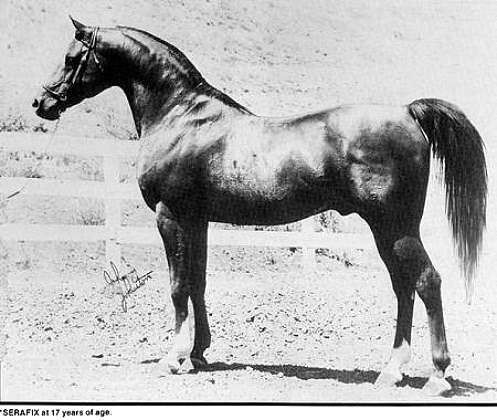
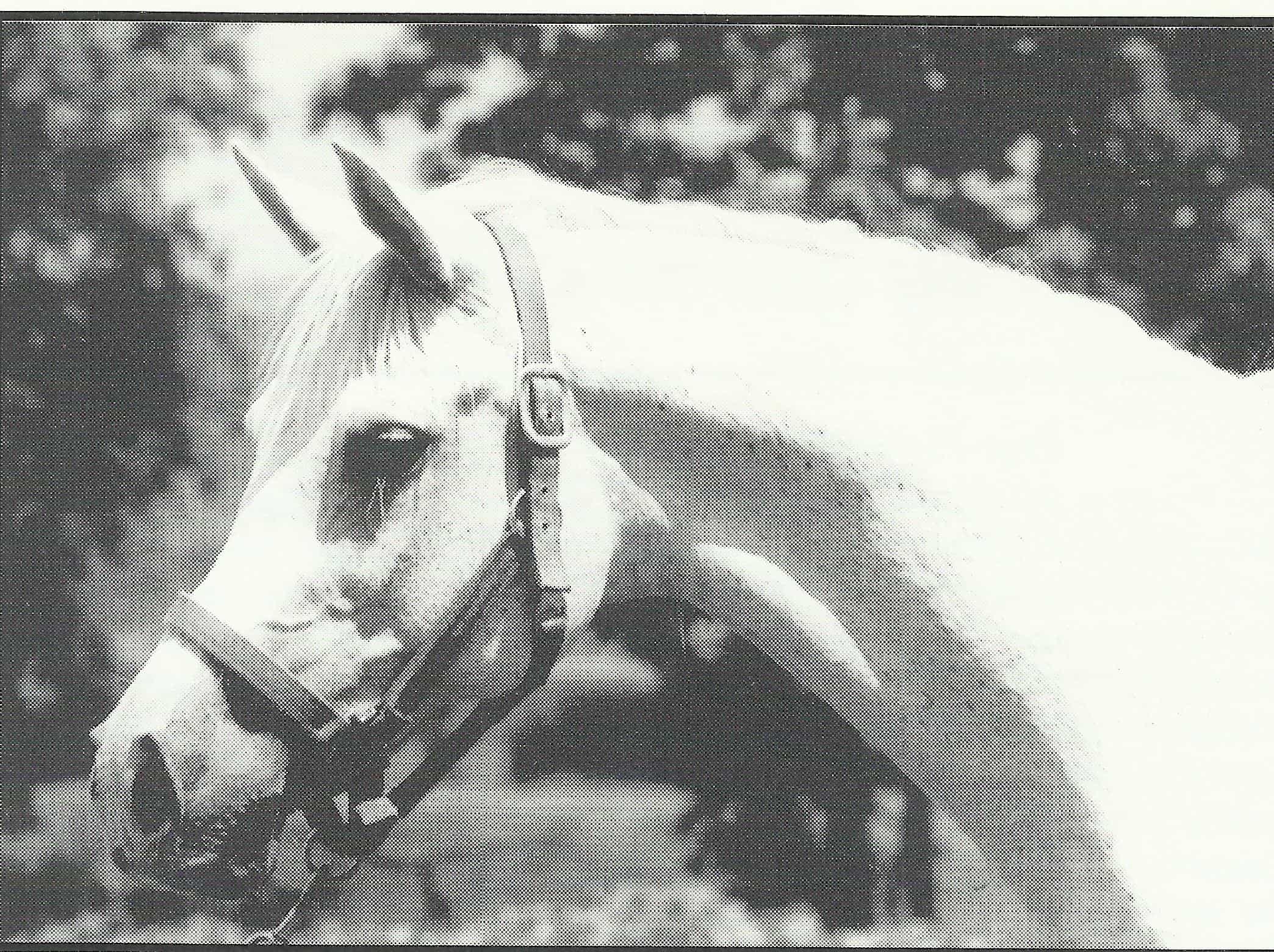

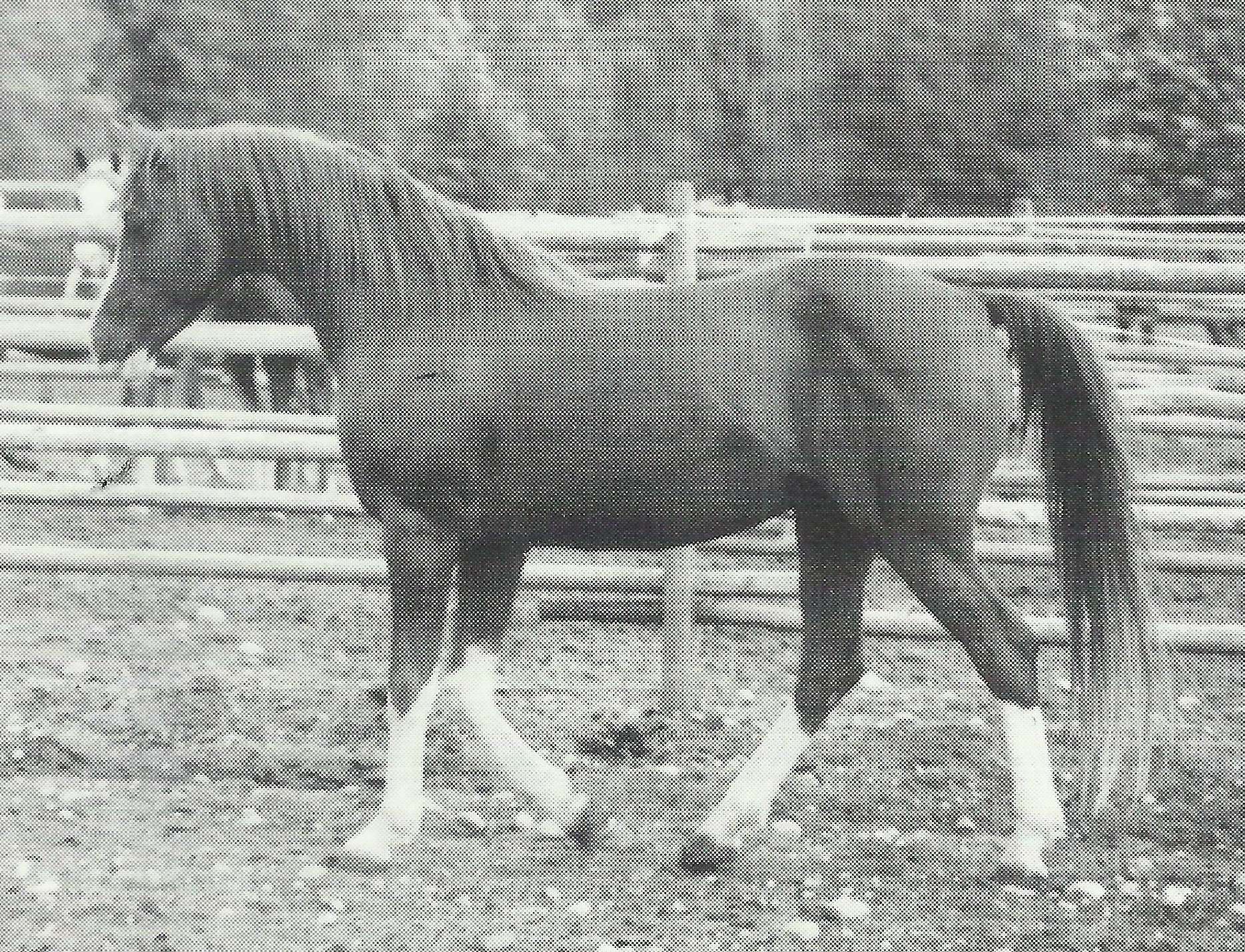
Comments
No Comments